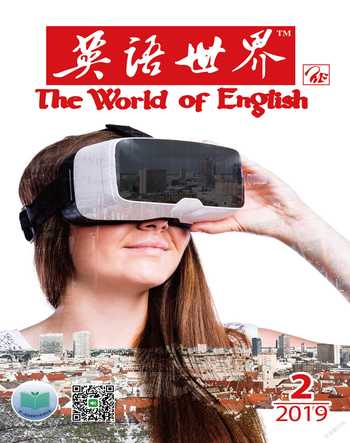达·芬奇:科学塑造艺术
朱莉娅·贝卢兹
The outstanding biography—from the same author who brought us Steve Jobs and Einstein—dissects1 the life of the complicated Renaissance artist with exquisite detail. We come to see da Vinci as not only an inventor of musical instruments and early flying machines, but also an obsessive notebook keeper and vegetarian, who had trouble finishing many of the projects and paintings he started.
Yet what is most thrilling is getting to know da Vinci the scientist. Isaacson explains how loving science and applying the scientific method to observing the world was really what made da Vinci a great artist and, Isaacson argues, a genius.
Da Vinci was obsessed with observing and understanding phenomena in nature, from the proportions of the human body to how the muscles of the lips moved. He wanted to know about everything around him, in minute2 detail, Isaacson writes. He wondered about questions “most people over the age of ten no longer puzzle about3”—for instance, how the tongue of a woodpecker works.
To learn about the world, da Vinci blended his own observations with experimentation. Never formally schooled, “he preferred to induce from experiments rather than deduce4 from theoretical principles,” Isaacson explains. He recorded his observations, looked for patterns among them, and then tested those patterns through additional observation and experimentation.
When he became fascinated with the idea that he could invent flying machines, three and a half centuries before the Wright brothers flew the first airplane, he observed the wings of birds in motion and recorded his observations with sketches and notes. Isaacson goes on:
“Galileo, born 112 years after Leonardo, is usually credited with being the first to develop this kind of rigorous empirical approach and is often hailed as the father of modern science,” the historian Fritjof Capra wrote. “There can be no doubt that this honor would have been bestowed on Leonardo da Vinci had he published his scientific writings during his lifetime, or had his Notebooks been widely studied soon after his death.”
Da Vinci’s emphasis on empirical observation also helped him improve his art. First, he was able to use what he learned from looking at nature to paint and draw. His studies of the body, animals, motion, shadow and light, perspective and proportion helped him better understand what he was seeing in front of him, and render it in art more accurately and finely than anyone else of his time.
He also used his observations of nature to make connections among phenomena. He noticed that a fetus in a womb looked like a seed in a shell, Isaacson writes. A recorder5 was like a larynx in the throat. Here’s Isaacson again:
What Leonardo probably began as four distinct elements6 ended up woven together in a way that illustrates a fundamental theme in his art and science: the interconnectedness of nature, the unity of its patterns, and the analogy between the workings of the human body and those of the earth.
Most importantly, his curiosity-driven explorations, and ability to connect art and science, helped him innovate in his work. They helped him think differently, Isaacson argues. Da Vinci made an astoundingly diverse array of discoveries, including conceptualizing the helicopter and solar power and advancing knowledge about everything from the reproductive organs to botany.
This genius is also what drew Isa-acson to Albert Einstein and Steve Jobs as subjects: They’re all innovators who were inspired by and drew connections between art and science.
“Leonardo da Vinci is the ultimate example of the main theme of my previous biographies: how the ability to make connections across disciplines—arts and sciences, humanities and technology—is a key to innovation, imagination, and genius,” Isaacson writes.
继《史蒂夫·乔布斯传》和《爱因斯坦传》后,沃尔特又为我们带来了一部传记佳作。该传记细致入微地剖析了文艺复兴时期那位复杂难解的艺术家的一生。我们由此得以了解到,达·芬奇不仅是乐器和早期飞行器方面的发明家,他还热衷于记笔记和吃素食。而他做事又往往有始无终,那些开了头的项目和画作,许多都未能完成。
不过,让人感到震撼万分的还要数能够一睹达·芬奇作为科学家的一面。艾萨克森向我们解释了为何达·芬奇对科学的热爱,以及他那以科学之法观察世界的习惯,才是促使他成为艺术大师乃至艺术奇才(艾萨克森语)的真正原因。
达·芬奇痴迷于观察和探究自然现象,从人体比例到唇部肌肉运动原理,他无所不涉。艾萨克森写道,他渴望去了解周遭一切事物,沉潜于细微之中。达·芬奇所思考的问题,是“多数人十岁以后便不会再去深思苦想的了”——比如,啄木鸟的舌头是怎样工作的。
为了探究世界,达·芬奇将实验与自己的观察融合了起来。艾萨克森解释道,虽未受过正规训练,“他却偏好从实验中进行归纳,而不是据理论原理来做出推演”。他记录下了他的观察结果,并从中寻找规律模式,然后再通过进一步的观察和实验来验证这些规律模式。
在达·芬奇对凭己之力发明飞行器这一念头痴迷不已之时——这比莱特兄弟试飞世界上首架飞机早了350年——他便观察过鸟类在飞行中翅膀的动作并用素描和笔记加以记录。艾萨克森进而写道:
据历史学家弗里肖夫·卡普拉所述,“比列奧纳多晚出生112年的伽利略,往往被看作是这类严密的经验研究法的创始人,并常被誉为现代科学之父。然而,倘若达·芬奇在其生前发表了他的科学文字,或他的笔记在其身后能够随即得到广泛研究,那么这一荣誉就无疑会落到达·芬奇身上了”。
达·芬奇对经验观察的重视,也有助于提升他的艺术创作。首先,他能把通过观察自然所获的知识运用到油画和素描中。而他对人体、动物、运动、阴影与光线、透视与比例的研究,又能帮他更好地吃透眼前所见之物,进而以同代人难以企及的精准和细腻将其再现于艺术作品中。
此外,达·芬奇还利用他对自然的观察在各种现象间建立起了联系。艾萨克森写道,达·芬奇曾注意到子宫中的胎儿就像荚中的种子一样,而竖笛则与人的喉管相似。又据艾萨克森之言:
最初可能被列奥纳多视为四种不同元素的东西,最终却交织在了一起,其交织的方式揭示了列奥纳多艺术创作与科学研究中的一个基本主题,即自然现象的相互关联、自然规律模式的协调统一,以及人体运转机制和地球运转机制的类同可比。
而尤为重要的是,他在好奇心驱使下所开展的各类研究,加上其融会艺术与科学的能力,帮助他在创作上不落窠臼。艾萨克森称,他的思维不拘一格,正得益于此。达·芬奇所获的发现丰富多样,令人叹为观止,其中既有关于直升机与太阳能的概念构想,也有对从生殖器官到植物学等各领域的深入认识。
这便是达·芬奇的惊世之才,而艾萨克森也正是受此吸引,才将爱因斯坦和乔布斯选作了立传对象。说到底,他们都是革新者,皆从艺术与科学中获得过启发,又在两者间建立了联系。
艾萨克森写道:“列奥纳多·达·芬奇是我先前几部传记作品之主题的最好典型。这一主题可表述为,在不同学科——艺术与科学、人文与技术——之间建立联系的能力,何以成为激发创新、想象和天才的关键。”
(译者为“《英语世界》杯”翻译大赛获奖选手,单位:中铁科研院)

